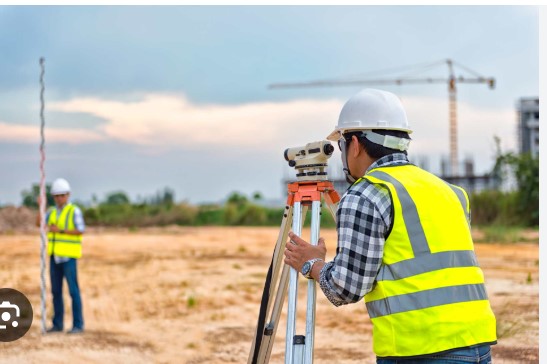Whether you’re planning a renovation, managing a commercial property, or overseeing a construction project, accurate spatial data is essential. That’s where measured building surveys come in.
A measured building survey provides precise measurements and detailed plans of a building’s dimensions, layout, and structural features. Unlike standard floor plans, these surveys capture every architectural detail with millimeter-level accuracy using advanced tools like laser scanners and total stations.
This guide explains what measured building surveys are, when you need one, what the process involves, and how to choose the right surveyor for your project.
What is a Measured Building Survey?
A measured building survey is a comprehensive assessment that documents the exact dimensions and layout of a building. Surveyors use specialized equipment to capture accurate measurements of walls, floors, ceilings, windows, doors, and other architectural features.
The result is a detailed set of plans, typically including floor plans, elevations, and cross-sections. These drawings serve as the foundation for architectural design, renovation work, or property management.
Key Features of a Measured Building Survey
High Accuracy: Modern surveys achieve precision within just a few millimeters, thanks to laser scanning technology and digital measuring tools.
Comprehensive Documentation: Surveys capture not only room dimensions but also structural elements like columns, beams, ceiling heights, and utilities.
Multiple Outputs: Depending on your needs, you can receive 2D CAD drawings, 3D models, or even Building Information Modeling (BIM) files.
Regulatory Compliance: Accurate surveys help ensure that renovation or construction plans meet building codes and planning requirements.
When Do You Need a Measured Building Survey?
Measured building surveys are valuable in numerous scenarios. Here are some of the most common applications:
Renovation and Refurbishment Projects
Before making any structural changes, architects and contractors need accurate existing condition data. A measured survey provides the baseline information required to design extensions, reconfigure interiors, or update aging infrastructure.
Property Sales and Purchases
Buyers and sellers often commission surveys to verify square footage, assess property condition, or provide transparent documentation during negotiations.
Heritage and Conservation Work
Historic buildings require special care. Measured surveys document existing conditions without causing damage, making them ideal for conservation projects where preserving original features is critical.
Facility Management
Property managers use measured surveys to maintain accurate records of commercial buildings, plan space utilization, and coordinate maintenance activities.
Legal Disputes
In boundary disputes or property damage cases, measured surveys provide objective evidence that can be used in legal proceedings.
Types of Measured Building Surveys
Not all surveys are created equal. Depending on your project requirements, you might need one of these common survey types:
Floor Plans
These show the layout of each floor level, including room dimensions, door and window locations, and wall thicknesses. They’re the most frequently requested survey output.
Elevations
Elevation drawings depict the building’s exterior or interior walls from a flat, head-on view. They’re useful for understanding facade details or planning exterior renovations.
Cross-Sections
Sections cut through the building to reveal internal structures, ceiling heights, and floor-to-floor relationships. These are particularly helpful for multi-story buildings or complex structural assessments.
3D Models
Using point cloud data from laser scanners, surveyors can create three-dimensional digital models that offer immersive visualization and precise spatial analysis.
Building Information Modeling (BIM)
BIM takes 3D modeling further by incorporating data about materials, systems, and building performance. It’s increasingly required for large commercial projects and public infrastructure.
The Measured Building Survey Process
Understanding what happens during a survey helps set expectations and ensures smooth project execution.
1. Initial Consultation
The surveyor meets with you to discuss project goals, the level of detail required, and any specific outputs you need. This is when you’ll clarify timelines, access arrangements, and budget considerations.
2. Site Visit and Data Collection
Surveyors visit the property equipped with laser scanners, total stations, or traditional measuring tools. They systematically measure every room and feature, often taking thousands of data points in just a few hours.
Access to all areas is crucial. Locked rooms, occupied spaces, or restricted zones can delay the survey or reduce accuracy.
3. Data Processing
Back in the office, surveyors process the raw data using specialized software. They create CAD drawings, 3D models, or BIM files based on your requirements.
4. Quality Control
Before delivery, experienced professionals review the survey for accuracy and completeness. Any discrepancies are corrected to ensure the final output meets industry standards.
5. Delivery
You receive the finished drawings in your preferred format—typically PDF for review and CAD or BIM files for design work. Most surveyors also provide ongoing support if questions arise during the design phase.
Technologies Used in Measured Building Surveys
Modern surveys rely on advanced technology to deliver speed and precision.
Laser Scanning
Laser scanners capture millions of data points in minutes, creating highly detailed point clouds that represent every surface in the building. This method is fast, non-invasive, and extremely accurate.
Total Stations
These electronic theodolites measure angles and distances with high precision. They’re often used for larger spaces or when laser scanning isn’t practical.
Photogrammetry
By analyzing overlapping photographs, photogrammetry software can generate 3D models. It’s useful for capturing complex facades or hard-to-reach areas.
Traditional Measuring Tools
For smaller projects or when technology isn’t accessible, surveyors still use tape measures, laser distance meters, and spirit levels. While slower, these methods remain reliable.
How to Choose the Right Surveyor
Selecting a qualified surveyor ensures your project starts on solid footing. Here’s what to consider:
Experience and Qualifications
Look for surveyors with relevant certifications and a proven track record in projects similar to yours. Membership in professional bodies like the Royal Institution of Chartered Surveyors (RICS) indicates adherence to industry standards.
Technology and Equipment
Ask what tools they use. Firms equipped with the latest laser scanning technology can deliver faster turnarounds and higher accuracy.
Portfolio and References
Review past projects and request client references. A reputable surveyor will happily share examples of their work.
Turnaround Time
Discuss deadlines upfront. Rush jobs are possible but may come at a premium.
Cost
Pricing varies based on building size, complexity, and the level of detail required. Get quotes from multiple surveyors and ensure they include all deliverables and any potential additional costs.
Common Challenges and How to Avoid Them
Even well-planned surveys can hit snags. Here’s how to minimize common issues:
Access Problems: Ensure all areas are accessible before the survey team arrives. Locked rooms or occupied spaces can delay completion.
Hidden Features: Concealed pipes, ducts, or structural elements may not be visible during the survey. Communicate any known hidden features to your surveyor.
Scope Creep: Clearly define what you need from the start. Adding requirements mid-project can increase costs and extend timelines.
Data Format Compatibility: Confirm that the final deliverables are compatible with your design software. CAD files come in various formats, and not all are interchangeable.
The Value of Accurate Surveys
Investing in a professional measured building survey pays dividends throughout your project. Accurate data reduces design errors, prevents costly construction mistakes, and streamlines approvals from planning authorities.
For architects, having precise measurements means fewer surprises during the design phase. Contractors benefit from clear, reliable plans that reduce guesswork and rework. Property owners gain confidence knowing their investment is based on solid information.
In short, a measured building survey isn’t just a nice-to-have—it’s a critical tool that sets the stage for successful building projects.
Getting Started with Your Survey
Ready to commission a measured building survey? Start by defining your project goals and the level of detail you need. Reach out to qualified surveyors, discuss your requirements, and request detailed quotes.
The right survey provides a strong foundation for whatever comes next, whether that’s a small renovation or a major redevelopment. With accurate data in hand, you can move forward with confidence.






